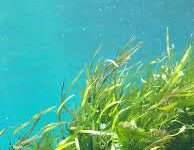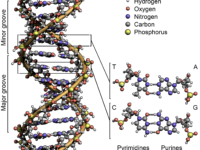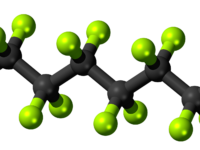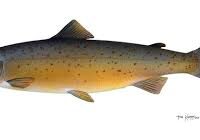While some dangerous creatures opt for a more subtle approach, the poison dart frog is remarkably considerate for letting predators know ahead of time that it is not to be messed with.
Its vibrant color is meant to signify its high toxicity, an example of aposematism or an animal advertising to its predators that it is not worth pursuing. By boldly showcasing its red flags upfront, this creature conveys a powerful message to potential predators who learn to associate the bright color with danger.
The frogs’ poison is so powerful that it even has indirect victims. The “dart” in “poison dart frog” comes from an old hunting strategy where indigenous communities in South American rainforests would rub their blow darts and arrow tips on the backs of these frogs before going hunting. The poison from one golden poison dart frog has been found to kill 20,000 mice, which is roughly equivalent to 10 humans.
The frogs are poisonous because of alkaloids, small molecules found in their diet of insects, specifically ants, mites, and termites. Other organisms contain alkaloids for similar reasons, including the blue-ringed octopus, pufferfish, and certain butterfly species. Rather than breaking down these toxic alkaloids, the frogs absorb and accumulate them into their skin to serve as a defense mechanism. Researchers have long wondered how poison dart frogs can contain so much poison without harming themselves.
“Researchers have long wondered how poison dart frogs can contain so much poison without harming themselves.”
The mechanism for this is still not fully understood, but a recent study by Stanford researchers has shed some light on the molecular carrier, a liver-derived protein called alkaloid binding globulin. To learn more about toxin transport in the frogs, the researchers used a bioengineered compound resembling an alkaloid as a “molecular fishing hook” to bind to proteins in frog blood samples. This compound was made to glow in fluorescent light, allowing the scientists to see which proteins bound to this planted molecule.
After analyzing the various proteins that were reeled in by the mock alkaloid, the researchers found that alkaloid-binding globulin (ABG) acted like a ‘toxin sponge’ that collected the poisonous compounds. They were surprised to find that ABG was responsible, rather than albumin, a molecule widely known for its role in the transport of small molecules like hormones.
The researchers then pinpointed which parts of the protein bound to the alkaloids. They found similarities between ABG and proteins that transport hormones in humans, suggesting a pattern of evolution that may have important human health implications. Most notably, studying and harnessing the power of binding proteins like alkaloid-binding globulin can potentially be used to treat humans poisoned with similar molecules. For example, there is an opportunity to reverse overdoses by binding to toxic chemicals in drugs.
When it comes to solving complex biological problems, it’s often best to look to the expert: nature. From the waves of the ocean to the smallest of amphibians, the answers to some of the most pressing scientific questions can be found right outside our homes.






